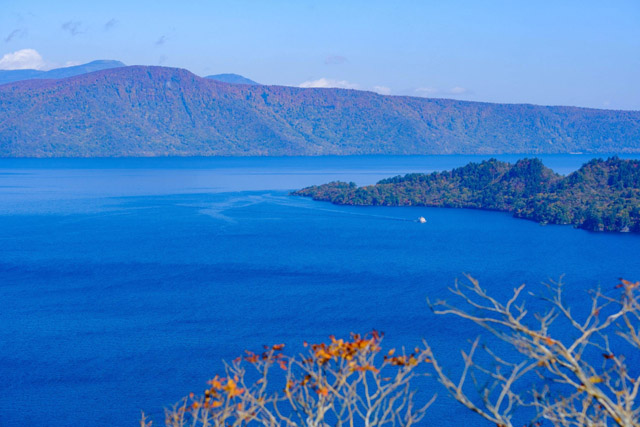
On the northernmost edge of Honshu lies Aomori prefecture, famous for its beautiful nature and for being the biggest apple producing region in Japan. For fans of outdoor activities, there's an abundance of places to see and things to do.
-
The name Aomori literally means ”blue (or green) forest”, and is believed to refer to a small-ish forest on a hill near present day Aomori City, used as a landmark by the many fishermen in the region. The area is known to have been inhabited since the Jomon period, around 5500 years ago.
![]()
If you are interested in the history of Aomori dating this far back, head to the Sannai-Maruyama Site, an archaeological site discovered in 1992. The findings gave researchers plenty of new information about how the earliest indigenous people of Japan lived their lives. Today the site contains several reconstructions of Jomon Era structures, and is open to the public. The Sannai-Maruyama Site is located approximately 20 minutes by car or bus from JR Aomori station.
![]()
![]()
![]()
![]()
Aomori is also famous for the local festivals – Nebuta Matsuri in Aomori and Neputa Matsuri in Hirosaki and Goshogawara, where enormous floats called Nebuta (or Neputa in some parts of the prefecture) are carried through the city center, surrounded by a large group of people dancing and playing various traditional Japanese instruments. These festivals are some of the largest in Japan, attracting large crowds every year. The festivals take place in the beginning of August every year, and are a must see if you happen to be in the region. For more information, have a look at
the official website.![]()
Nature lovers, however, should leave the major cities behind, and instead venture to the more rural parts of the prefecture, where noteworthy spots abound. One of these is Hotoke-ga-ura, a series of rock formations located on the west coast of the Shimokita Peninsula, not far from the village of Sai.
![]()
The rock formations are a nationally designated Place of Scenic Beauty, and can be reached by taking a ferry from Aomori City, but there’s only one round trip per day, so make sure to check the timetable and plan your journey accordingly. Traveling the land route is possible too, but somewhat complicated as you need to use a train and two bus lines in order to travel the entire route from Aomori City to the cliffs of Hotoke-Ga-Ura.
![]()
Another, somewhat more accessible rock formation worth mentioning is Senjojiki, a bedrock beach on the coast of the Sea of Japan that was formed by an earthquake in 1792. The name Senjojiki means ”a thousand tatami mats,” and refers to the size of the rocks. To get here, take the scenic Gono Line (also known as Resort Shirakami) that runs along the coastline and connects Aomori City with Akita City.
![]()
Another designated scenic spot is Lake Towada, formed by volcanic eruptions over the centuries. The most recent eruption occurred in 915, and is believed to have given the lake its current shape, near circular with a circumference of about 44 km (27.3 miles).
![]()
![]()
The surrounding area is now a national park and a popular spot for hikers and nature lovers all throughout the year (although, parts are inaccessible during the winter months). Buses from both Aomori City and Hachinohe are available.
![]()
While riding the Gono Line, the silhouette of Mount Iwaki will loom over you for a large portion of the trip. This mountain is sometimes referred to as ”Tsugaru Fuji” or the Mt. Fuji of Tsugaru, and like its sibling near Tokyo, Mt Iwaki is also an active volcano. The last time it erupted was in 1863, and it’s under constant surveillance by researchers at Hirosaki University.
![]()
The entire mountain is today a portion of Iwakeyama Shrine, one of the biggest shrines in the Aomori. During its annual festival, a parade to the top of the mountain is conducted by pilgrims playing traditional drums and flutes. Another nearby volcano is Mount Osore, located in the center of the Shimokita Peninsula.
![]()
On the eastern shore of Aomori prefecture, not far from Hachinohe, lies the Island of Kabushima (connected to the mainland since the 1950s). This island is home to a shrine inhabited by 40,000 or so seagulls, making it a memorable sight. If you plan to go here, however, make sure to bring an umbrella, as the risk of being hit by seagull droppings is quite considerable on the island and around the shrine. The nearest station to Kabushima is Same Station on the JR Hachinohe line.
![]()
Aomori is also famous for the many onsen (hot springs) dotting the prefecture. One of the most noteworthy is Furofushi Onsen, located a stone’s throw from the coast of the Sea of Japan. Another one is Yagen Onsen, near Mutsu on the Shimokita peninsula.
Posts by Said Karlsson- Osorezan Bodaiji Temple
-
4.5
110 Reviews -
-
- Aomori Pref. Mutsushi Tanabu Ugo Toshiyama 3-2
-
-
-
- 0175223825
-
-
-
- 6:00-17:00
-
View All
















 Go here
Go here









